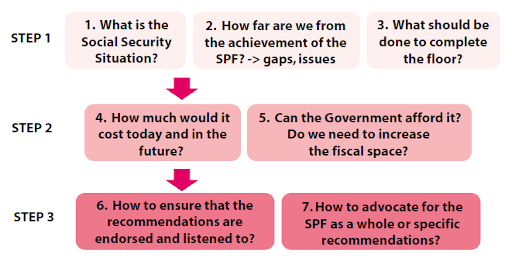Assessment Based National Dialogue
SPF Good Practices Guide
Module 4
Objectives
This module explains the objectives and process of the assessment based national dialogue exercise. The importance of the ABND as a participatory approach is highlighted. This session covers the three steps of the ABND, i.e. building the assessment matrix, costing recommendations and having the finalized report endorsed technically and politically. Some of the limitations and challenges of conducting the ABND exercise are shared with the participants. The ABND process is illustrated through examples on how the exercise was carried out in Indonesia and Thailand.
Key questions
- What are the objectives of the ABND exercise?
- What are the main steps of the ABND process?
- How do we ensure that all stakeholders are involved from the outset?
- How do we overcome the challenges of data limitations in some countries?
- How do we move from a technical validation of the report to a political endorsement?
Takeaway message
The assessment based national dialogue exercise is a methodology developed by the ILO to support ILO Member States in further developing nationally defined social protection floors. The joint development of an assessment matrix aims to diagnose the social security situation in a country, identify policy gaps and implementation issues, and propose new or expanded SPF provisions. Based on the ILO RAP modelâs calculations, the cost of introducing these provisions is assessed and projected over a number of years. The shared diagnosis of the social security situation and results of the RAP model feed a national dialogue on future national social protection priorities for action.
Resources
- Master module 4 - Introduction to the assessment based national dialogue exercise
- Presentation - Introduction to the assessment based national dialogue exercise
- Presentation - The experience of conducting the ABND exercise in Indonesia
Process of ABND
